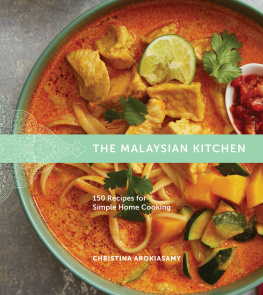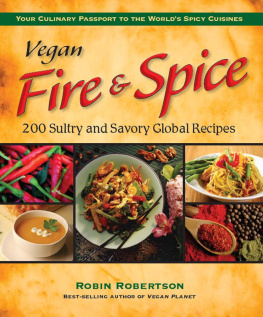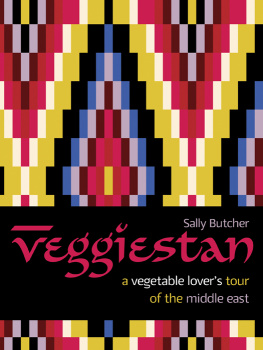Roden - Tamarind & Saffron: Favourite Recipes from the Middle East
Here you can read online Roden - Tamarind & Saffron: Favourite Recipes from the Middle East full text of the book (entire story) in english for free. Download pdf and epub, get meaning, cover and reviews about this ebook. year: 2009, publisher: Penguin Publishing, genre: Home and family. Description of the work, (preface) as well as reviews are available. Best literature library LitArk.com created for fans of good reading and offers a wide selection of genres:
Romance novel
Science fiction
Adventure
Detective
Science
History
Home and family
Prose
Art
Politics
Computer
Non-fiction
Religion
Business
Children
Humor
Choose a favorite category and find really read worthwhile books. Enjoy immersion in the world of imagination, feel the emotions of the characters or learn something new for yourself, make an fascinating discovery.

- Book:Tamarind & Saffron: Favourite Recipes from the Middle East
- Author:
- Publisher:Penguin Publishing
- Genre:
- Year:2009
- Rating:4 / 5
- Favourites:Add to favourites
- Your mark:
- 80
- 1
- 2
- 3
- 4
- 5
Tamarind & Saffron: Favourite Recipes from the Middle East: summary, description and annotation
We offer to read an annotation, description, summary or preface (depends on what the author of the book "Tamarind & Saffron: Favourite Recipes from the Middle East" wrote himself). If you haven't found the necessary information about the book — write in the comments, we will try to find it.
Roden: author's other books
Who wrote Tamarind & Saffron: Favourite Recipes from the Middle East? Find out the surname, the name of the author of the book and a list of all author's works by series.
Tamarind & Saffron: Favourite Recipes from the Middle East — read online for free the complete book (whole text) full work
Below is the text of the book, divided by pages. System saving the place of the last page read, allows you to conveniently read the book "Tamarind & Saffron: Favourite Recipes from the Middle East" online for free, without having to search again every time where you left off. Put a bookmark, and you can go to the page where you finished reading at any time.
Font size:
Interval:
Bookmark:
Tamarind & Saffron Favourite Recipes from the Middle East Claudia Roden  PENGUIN BOOKS PENGUIN BOOKS Tamarind & Saffron Claudia Roden is the author of the highly praised The Book of Jewish Food, which won the Andr Simon Award, the Glenfiddich Food Book of the Year, the Guild of Food Writers Food Book Award, the Jewish Quarterly Prize and the James Beard Award. Her other books include the seminal A Book of Middle Eastern Food; Picnic; The Good Food of Italy - Region by Region; Mediterranean Cookery; and Coffee: A Connoisseurs Companion. She has now won six Glenfiddich prizes for her books. She lives in London. PENGUIN BOOKS Published by the Penguin Group Penguin Books Ltd, 80 Strand, London WC2R 0RL , England Penguin Group (USA) Inc., 375 Hudson Street, New York, New York 10014, USA Penguin Group (Canada), 90 Eglinton Avenue East, Suite 700, Toronto, Ontario, Canada M4P 2Y3 (a division of Pearson Penguin Canada Inc.) Penguin Ireland, 25 St Stephens Green, Dublin 2, Ireland (a division of Penguin Books Ltd) Penguin Group (Australia), 250 Camberwell Road, Camberwell, Victoria 3124, Australia (a division of Pearson Australia Group Pty Ltd) Penguin Books India Pvt Ltd, 11 Community Centre, Panchsheel Park, New Delhi 110 017, India Penguin Group (NZ), 67 Apollo Drive, Rosedale, North Shore 0632, New Zealand (a division of Pearson New Zealand Ltd) Penguin Books (South Africa) (Pty) Ltd, 24 Sturdee Avenue, Rosebank, Johannesburg 2196, South Africa Penguin Books Ltd, Registered Offices: 80 Strand, London, WC2R 0RL , England www.penguin.com First published 1999 Published in Penguin Books 2000 Copyright Claudia Roden, 1999 All rights reserved The moral right of the author has been asserted Except in the United States of America, this book is sold subject to the condition that it shall not, by way of trade or otherwise, be lent, re-sold, hired out, or otherwise circulated without the publishers prior consent in any form of binding or cover other than that in which it is published and without a similar condition including this condition being imposed on the subsequent purchaser ISBN: 978-0-14-195775-3 For my children and their families, Simon, Nadia and Anna,
PENGUIN BOOKS PENGUIN BOOKS Tamarind & Saffron Claudia Roden is the author of the highly praised The Book of Jewish Food, which won the Andr Simon Award, the Glenfiddich Food Book of the Year, the Guild of Food Writers Food Book Award, the Jewish Quarterly Prize and the James Beard Award. Her other books include the seminal A Book of Middle Eastern Food; Picnic; The Good Food of Italy - Region by Region; Mediterranean Cookery; and Coffee: A Connoisseurs Companion. She has now won six Glenfiddich prizes for her books. She lives in London. PENGUIN BOOKS Published by the Penguin Group Penguin Books Ltd, 80 Strand, London WC2R 0RL , England Penguin Group (USA) Inc., 375 Hudson Street, New York, New York 10014, USA Penguin Group (Canada), 90 Eglinton Avenue East, Suite 700, Toronto, Ontario, Canada M4P 2Y3 (a division of Pearson Penguin Canada Inc.) Penguin Ireland, 25 St Stephens Green, Dublin 2, Ireland (a division of Penguin Books Ltd) Penguin Group (Australia), 250 Camberwell Road, Camberwell, Victoria 3124, Australia (a division of Pearson Australia Group Pty Ltd) Penguin Books India Pvt Ltd, 11 Community Centre, Panchsheel Park, New Delhi 110 017, India Penguin Group (NZ), 67 Apollo Drive, Rosedale, North Shore 0632, New Zealand (a division of Pearson New Zealand Ltd) Penguin Books (South Africa) (Pty) Ltd, 24 Sturdee Avenue, Rosebank, Johannesburg 2196, South Africa Penguin Books Ltd, Registered Offices: 80 Strand, London, WC2R 0RL , England www.penguin.com First published 1999 Published in Penguin Books 2000 Copyright Claudia Roden, 1999 All rights reserved The moral right of the author has been asserted Except in the United States of America, this book is sold subject to the condition that it shall not, by way of trade or otherwise, be lent, re-sold, hired out, or otherwise circulated without the publishers prior consent in any form of binding or cover other than that in which it is published and without a similar condition including this condition being imposed on the subsequent purchaser ISBN: 978-0-14-195775-3 For my children and their families, Simon, Nadia and Anna,
Ros and Clive, Cesar, Peter, Sarah and Ruby
The recipes are old and traditional, but the choice of dishes is modern in that it assembles the kind of food people want to eat and cook today - delicious, exciting, wholesome and easy to prepare.The general culture of the Middle East has it that to really please your guests you must show that you have worked very hard to prepare a meal. You have to offer an assortment of small pies, stuffed vegetables, little meatballs and the like, which require wrapping, hollowing, filling, rolling. It is almost an insult to offer something that looks as though it took little time. You can see why people have the idea that Middle Eastern food is excessively labour-intensive. But it does not have to be.Many of the simpler dishes are really appealing. It is the special combinations of ingredients rice andlentils with caramelized onions; bulgur (cracked wheat) with tomatoes and aubergines; artichokes and broad beans with almonds; spinach with beans or chickpeas or with yoghurt - and their delicate flavouring which make them wonderful.
Although often the only flavourings are olive oil and lemon juice, every country has its traditional sets of aromatics. There is the fried garlic with cumin and coriander of Egypt; the cinnamon and allspice of Turkey; the sumac and tamarind of Syria and Lebanon; the pomegranate syrup of Iran; the preserved lemon and harissa of North Africa. The tantalizingly contradictory flavours of spicy hot with sweet of Morocco include saffron, ginger, cinnamon and cumin with hot red pepper and honey. Another attractive side of Middle Eastern cuisines is the great use which is made of grains, vegetables, pulses, fruits, nuts and yoghurt, which are now seen as the important part of a healthy diet. The spread of Islam in the seventh century and the establishment of an Islamic empire across Asia, North Africa, Spain and Sicily, and of the Ottoman empire over an enormous territory from the fourteenth century until the twentieth, brought a certain unity in cooking traditions and means that similar dishes appear in different countries in different regional versions. Some of the recipes in this book are classics from The New Book of Middle Eastern Food.
Almost half are new, and the old ones are often given in a new version. I have sometimes simplified a method. The kind of adaptation I have made is to bake pies instead of frying them; to use less butter or replace it in some dishes with oil; and to cook fish for a shorter time. I have also used an easier square shape for some large individual filo pies. When I first came to England in the mid-fifties, no one here had eaten aubergines, let alone cooked them. I had to explain courgettes as baby marrows.
You could only buy products such as pitta bread, filo pastry and vine leaves in Cypriot stores in Camden Town. Certain products such as sumac, the ground red berry with a lemony flavour, tamarind paste and the sweet and sour pomegranate syrup or molasses made from the boiled-down juice of sour pomegranates were not available anywhere. Now bulgur and couscous, chickpeas and filo, are in our supermarkets as well as prepared foods such as hummus, baba ghanoush and taramasalata, falafel and filo pies, and literally every ingredient used in Middle Eastern cooking can be found in the many Middle Eastern and Indian stores which have mushroomed around our cities. And with the proliferation of Lebanese, Turkish, Persian and Moroccan restaurants, Middle Eastern food has become familiar. It has even been integrated in the menus of fashionable new restaurants offering what has come to be known as contemporary British or modern European food. The choice of dishes is a response to the new situation and to the reality that most people have less time to cook.
You can be flexible in the way you plan menus. Mezzes or appetizers - one of the appealing features of Middle Eastern cooking - can be served with drinks, as a first course or as side dishes. You can make a casual meal out of two or three, accompanied by bread and perhaps cheese or yoghurt and olives. A large assortment can be offered at a buffet party. The traditional drinks served with appetizers are arak (or raki), the anis-flavoured spirit distilled from grapes, and the Moroccan mahia, made with figs or dates. Beer too goes well with appetizers.
For those who do not take alcohol, fruit juices or chilled yoghurt beaten with water or soda are traditional alternatives. For most of the fish dishes you may use alternative kinds of fish. Feel free to use a cheaper fish or one more easily available than the one suggested. Lamb is the traditional meat of the Middle East, but beef or veal can be used instead; and in many recipes, such as stews, meat and poultry are interchangeable. Rice, couscous and bulgur are the staples of the area. The best way to end your meal is with fresh fruit or with dried fruit and nuts.
Puddings and pastries are for special occasions. This book is all about pleasure and enjoyment but it is also a way of discovering other worlds and other cultures. By the Same Author A New Book of Middle Eastern Food Coffee: A Connoisseurs Companion Mediterranean Cookery The Food of Italy Picnic: A Guide to Outdoor Food The Book of Jewish Food
Next pageFont size:
Interval:
Bookmark:
Similar books «Tamarind & Saffron: Favourite Recipes from the Middle East»
Look at similar books to Tamarind & Saffron: Favourite Recipes from the Middle East. We have selected literature similar in name and meaning in the hope of providing readers with more options to find new, interesting, not yet read works.
Discussion, reviews of the book Tamarind & Saffron: Favourite Recipes from the Middle East and just readers' own opinions. Leave your comments, write what you think about the work, its meaning or the main characters. Specify what exactly you liked and what you didn't like, and why you think so.


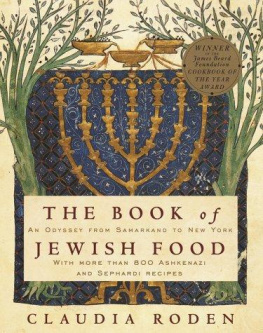

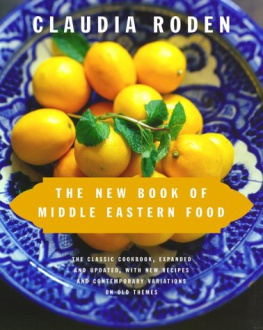
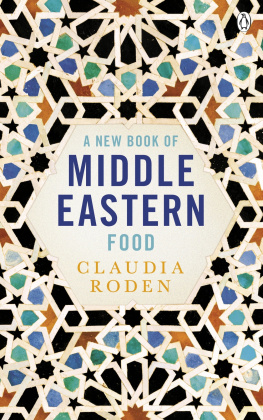

![Claudia Roden - Claudia Rodens Mediterranean: Treasured Recipes from a Lifetime of Travel [A Cookbook]](/uploads/posts/book/289768/thumbs/claudia-roden-claudia-roden-s-mediterranean.jpg)
